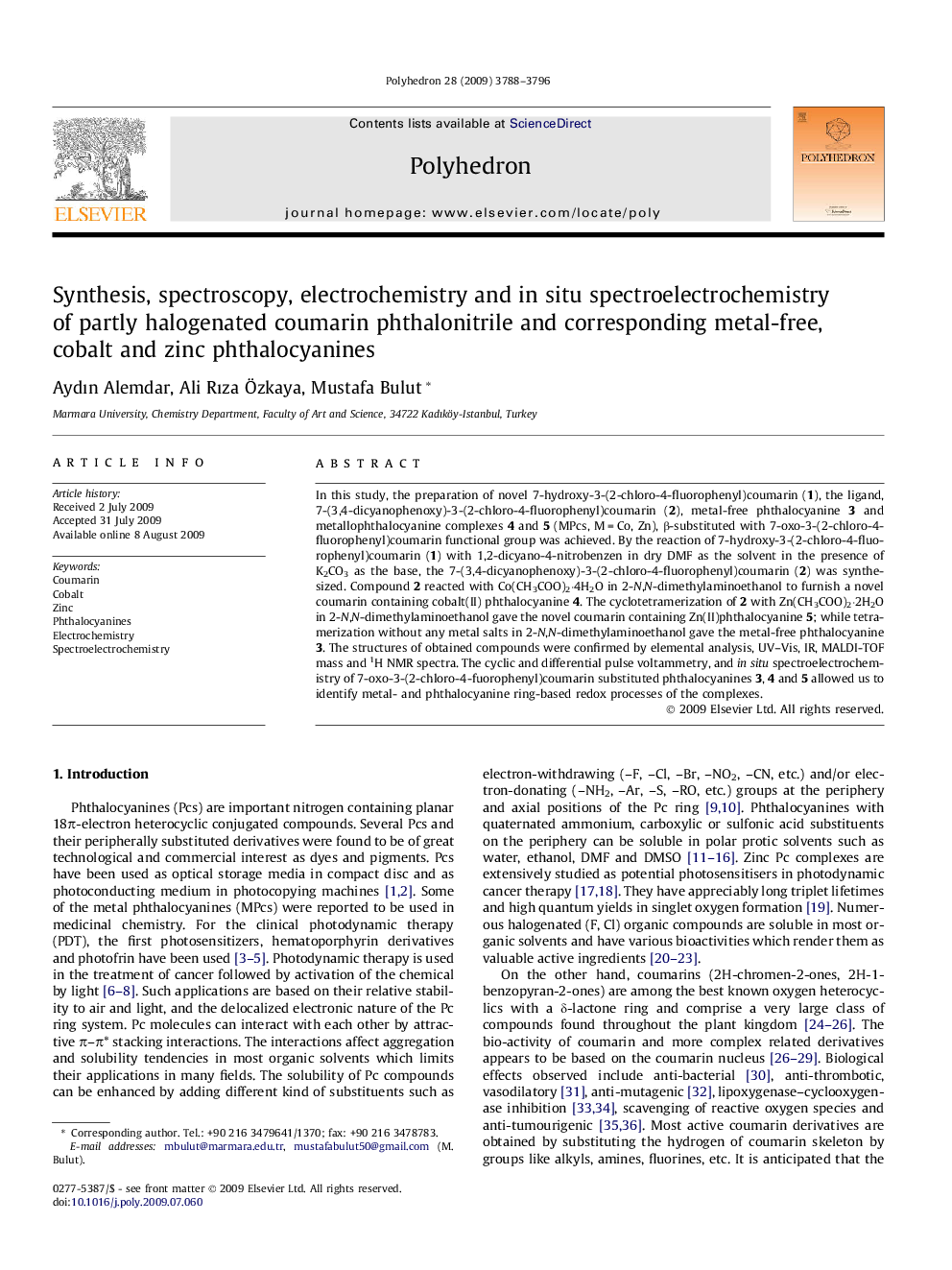| Article ID | Journal | Published Year | Pages | File Type |
|---|---|---|---|---|
| 1337124 | Polyhedron | 2009 | 9 Pages |
In this study, the preparation of novel 7-hydroxy-3-(2-chloro-4-fluorophenyl)coumarin (1), the ligand, 7-(3,4-dicyanophenoxy)-3-(2-chloro-4-fluorophenyl)coumarin (2), metal-free phthalocyanine 3 and metallophthalocyanine complexes 4 and 5 (MPcs, M = Co, Zn), β-substituted with 7-oxo-3-(2-chloro-4-fluorophenyl)coumarin functional group was achieved. By the reaction of 7-hydroxy-3-(2-chloro-4-fluorophenyl)coumarin (1) with 1,2-dicyano-4-nitrobenzen in dry DMF as the solvent in the presence of K2CO3 as the base, the 7-(3,4-dicyanophenoxy)-3-(2-chloro-4-fluorophenyl)coumarin (2) was synthesized. Compound 2 reacted with Co(CH3COO)2·4H2O in 2-N,N-dimethylaminoethanol to furnish a novel coumarin containing cobalt(II) phthalocyanine 4. The cyclotetramerization of 2 with Zn(CH3COO)2·2H2O in 2-N,N-dimethylaminoethanol gave the novel coumarin containing Zn(II)phthalocyanine 5; while tetramerization without any metal salts in 2-N,N-dimethylaminoethanol gave the metal-free phthalocyanine 3. The structures of obtained compounds were confirmed by elemental analysis, UV–Vis, IR, MALDI-TOF mass and 1H NMR spectra. The cyclic and differential pulse voltammetry, and in situ spectroelectrochemistry of 7-oxo-3-(2-chloro-4-fuorophenyl)coumarin substituted phthalocyanines 3, 4 and 5 allowed us to identify metal- and phthalocyanine ring-based redox processes of the complexes.
Graphical abstractIn this study, the preparation of phthalocyanines (3–5) (M = 2H, Co, Zn), β-substituted with 7-oxo-3-(2-chloro-4-fluorophenyl)coumarin functional group was achieved. The structures of compounds were confirmed by elemental analysis, UV–Vis, IR, MALDI-TOF mass and 1H NMR spectra. We also investigate the electrochemical and in situ spectroelectrochemical behaviour of the synthesized Pc complexes.Figure optionsDownload full-size imageDownload as PowerPoint slide
